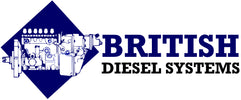Call us +44 1922 867 508

What is a Turbocharger?
A turbocharger is a device that enhances the performance and efficiency of an internal combustion engine by forcing more air into the combustion chamber. It is commonly used in both gasoline and diesel engines, and its primary function is to increase the air intake, allowing for a more efficient combustion process.
The key components of a turbocharger include a turbine and a compressor, both mounted on a common shaft. Here's a brief overview of how a turbocharger works:
-
Exhaust Gas Energy: The turbocharger is positioned in the exhaust stream of the engine. As the engine burns fuel in the combustion chamber, it produces high-velocity exhaust gases. These gases flow over the turbine blades of the turbocharger.
-
Turbine Rotation: The energy from the exhaust gases causes the turbine to spin. The turbine and a connected compressor are mounted on a common shaft, and as the turbine spins, it drives the compressor.
-
Compressed Air Intake: The compressor draws in ambient air, compresses it, and then delivers the compressed air to the engine's intake manifold. This compressed air contains more oxygen, allowing for a better air-fuel mixture in the combustion chamber.
-
Improved Combustion: The increased air intake, with higher oxygen levels, results in improved combustion efficiency. More fuel can be burned, leading to increased power and torque output.
-
Boost Pressure: The pressure of the compressed air delivered to the engine is referred to as boost pressure. Higher boost pressure correlates with increased engine performance.
Turbocharging is a common method used to boost the power and efficiency of both gasoline and diesel engines. It allows smaller engines to produce power levels that would traditionally require a larger, naturally aspirated engine. The term "turbocharged" is often used to describe vehicles equipped with a turbocharger. Turbochargers are widely used in automotive, marine, and industrial applications to enhance engine performance.
 Skip to content
Skip to content

